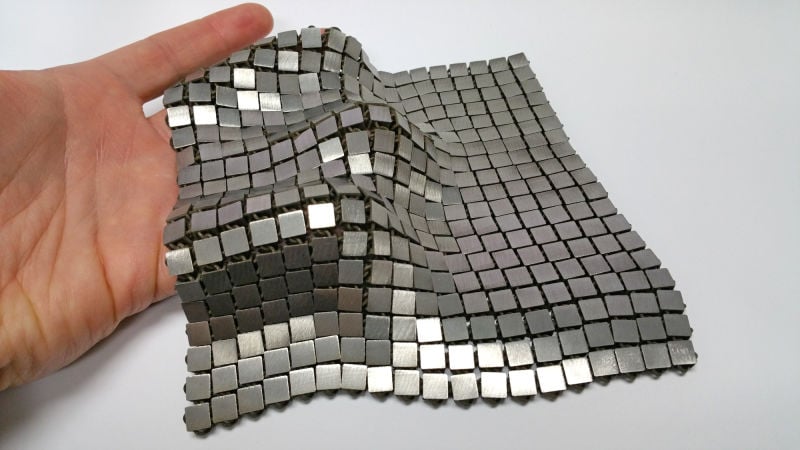NASA creates new 3D printed chainmail for use in space

When you think chainmail, you typically think of medieval warriors on horses, battling for the honor of their king. But now, thanks to NASA, a once medieval necessity is getting an upgrade for modern use. This chainmail, or as NASA calls it “Space Fabric”, is what NASA hopes could be the future of space travel and it’s all thanks to 3D Printing.
Developed by a team led by Raul Polit Casillas at the Jet Propulsion Laboratory in Pasadena, California, this new Space Fabric prototype could potentially be used in a variety of ways such as to shield spacecrafts from meteorites, to insulate spacecrafts, or even for use with large antennas and deployable devices.

The new “Space Fabric” prototype looks like Medieval chainmail
Created using 3D printing, the team customized and designed their Space Fabric specifically for space travel, giving their new prototype four different functions of use. On one side, you have the ability to reflect light. On the other, it has the ability to absorb light to act as an insulator. In addition, with its chainmail design, the prototype is both foldable and flexible, allowing it to adapt its shape for different uses.
“We are just scratching the surface of what’s possible,” says Andrew Shapiro-Scharlotta, the Early Stage Innovation Manager at JPL. “The use of organic and non-linear shapes at no additional costs to fabrication will lead to more efficient mechanical designs.”

Each side of the “Space Fabric” has different functions: absorb light or reflect light
Thanks to this new innovation from NASA, we are positive that there will be more doors opening soon for both additive manufacturing and space travel. We look forward to seeing what other discoveries and innovations happen for us here on earth and in the great beyond, thanks to this fascinating technology.
What do you think of this new innovation from NASA? Do you think that we’ll see more innovations like this from them in the future? Let us know in a comment below or on our Facebook and Twitter page!







It reminds me more of scale mail than chain mail, even though its parts are not overlapping. They mention protection against possible micrometeorites, but a few years back (possibly contemporaneous with this article; I really don’t remember), NASA had found that layered armor was more effective against high speed particles than even the same thickness of solid armor. With a single layer of armor, the particle simply plowed through the armor, even though it shattered, and struck whatever delicate structure was underneath, offering little protection. But when they used stacked plates with a gap between plates, they found that when particles struck the first plate, they shattered and rapidly spread out. The no longer concentrated mass was usually stopped by the second plate, and in the slow motion demonstrations I saw, never penetrated the third plate. Staggering the plates turned a deadly armor-penetrating round into a widely scattered debris field, with no single fragment having the mass of the original particle. It was like using a shotgun against a tank from a distance. This makes me think that it might not be useful as spacecraft armor after all.
Due to the different behaviors of particles at different speeds, however, it makes me wonder if it might be effective against much slower bullets, creating an added layer of safety for the wearer, possibly even against so-called cop-killer rounds. It would have been interesting if the article had mentioned what materials were used, and the projected cost of making it, as well. Time to try to follow up on seven years worth of progress.